Atlantic Monthly Contributors's Blog, page 365
August 19, 2015
There Are No Rules in Love and Taxes

Read security news this past summer and you might notice a pattern.
First, a U.S. government agency announces that it’s found a security breach and is investigating what occurred. Some time passes.
Then, it announces the breach affected a certain number of people—more than it thought at first. More time passes.
Finally, it announces that research has revealed the breach to be massive, tearing way further into its servers than initially imagined.
Such was the story of the Office of Personnel Management (OPM) hack earlier this summer. As news dribbled out from May to June to July, the size of the OPM hack swelled—from 4 million, to 18 million, to 21.5 million—and the kind of information accessed got worse and worse. In 2014, a hack that accessed information about 800,000 U.S. Postal Service employees followed largely the same story.
And now it’s happened again. On Monday, the Internal Revenue Service announced that a security breach first revealed in May affects almost three times as many people as initially thought. The IRS says that it is notifying more than 330,000 households that their tax returns were probably accessed by attackers. The personal information of an additional 170,000 households might be vulnerable as well, the agency also said.
In May, the IRS believed that the tax returns of only 114,000 households had been copied.
This is probably not the last case like this. After the OPM hack, President Obama ordered a “30-day cybersecurity sprint.” This improved the situation somewhat—use of security fundamentals like two-factor authentication surged—but some agencies actually reported worse figures for those basics at the end of the month than they did at the beginning.
In some ways, this is a government story. No one thinks that a 30-day sprint can fix the considerable problems afflicting government cybersecurity and technology, but—just to be clear—there is no conceivable way that a 30-day sprint fixed the considerable problems afflicting government technology. A sprint didn’t fix just one website, Healthcare.gov (though it helped!), and it’s unlikely to work for the hundreds of websites and databases operated out of Washington. Improving the state of cybersecurity will require slow, necessary steps like procurement reform.
But it reaches much further than civics. The IRS hack wasn’t the only piece of cybersecurity news this week—it’s probably not even the biggest. Ashley Madison, the social network explicitly for married people trying to find affairs, was hacked last month. On Tuesday, both Ars Technica and Brian Krebs, one of the best regarded cybersecurity experts, confirmed that the contents of that hack—10 gigabytes of files—were posted to public BitTorrent trackers, and that the dump contains user profiles, phone numbers, email addresses, and transaction histories. That information is just sitting on public networks now: Anyone can check to see if someone was an Ashley Madison user (provided they used their known email address or credit card).
This is new territory. “If the data becomes as public and available as seems likely right now, we’re talking about tens of millions of people who will be publicly confronted with choices they thought they made in private,” writes John Herrman at The Awl. “The Ashley Madison hack is in some ways the first large-scale real hack, in the popular, your-secrets-are-now-public sense of the word. It is plausible—likely?—that you will know someone in or affected by this dump.”
Between the attacks on Ashley Madison and the U.S. government, what we’re seeing play out, in public, is an erosion of the possibility of trust in institutions. No secrets—whether financial, personal, or intimate—that have been confided to an organization that uses servers can be considered quite safe any more. You don’t even have to submit your data online: As long as your information eventually winds up on a computer connected to the Internet, you could be in trouble.
All these attacks, it’s worth adding, didn’t happen only because hackers suddenly became much more sophisticated. They seem to have occurred because powerful institutions, public and private, failed to complete security due diligence. (Even at the end of the “cybersprint,” less than a third of U.S. Department of Justice workers used two-factor authentication.) This makes it nearly impossible for a consumer to know which organizations are trustworthy until it’s too late.
These hacks, and the ones we don’t know about yet, require a quasi-multidisciplinary interpretation. If the IRS, OPM, or USPS hacks seem worrisome, imagine personal information from those attacks counter-indexed against the Ashley Madison database. Wired is already reporting that about 15,000 of the email addresses in the Madison dump are from .gov or .mil domains. An attacker looking to blackmail the FBI agent whose background check data they now hold—or, at a smaller scale, a suburban dad whose tax return wound up in the wrong hands—knows just which database to check first. No hack happens alone.









Why Dr. Dre's Abuse of Women Is Catching Up With Him Now
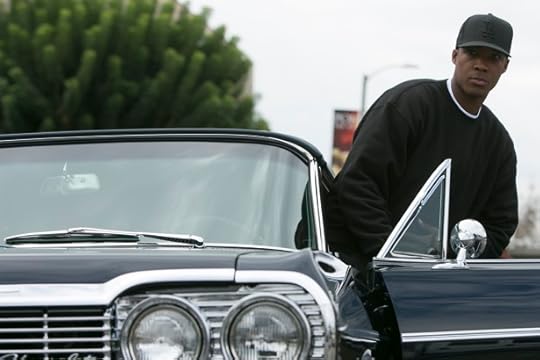
The journalist Dee Barnes’s recollection of the time when Dr. Dre beat her—and of its aftermath, and of her feelings about its omission from Straight Outta Compton—is one of the best essays to be published this year. You can read it at Gawker. Some of the details Barnes presents, especially about the physical, mental, and career effects of being attacked by one of the biggest names in music, are wrenching. “When I get migraines, my head does ring and it hurts, exactly in the same spot every time where he smashed my head against the wall,” she writes. “People have accused me of holding onto the past; I’m not holding onto the past. I have a souvenir that I never wanted. The past holds onto me.”
Related Story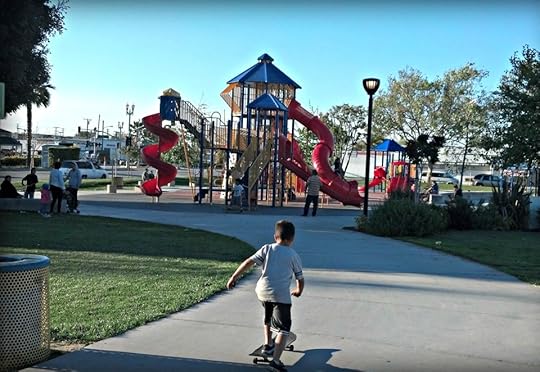
None of the fundamental details of the story are new to the world, nor even contested. Barnes was the host of a hip-hop television show called Pump It Up; her interview with Ice Cube in 1990 so angered his former bandmates in N.W.A. that Dre attacked Barnes in a nightclub bathroom. He pled no contest to assault and settled her civil suit against him out of court. Over the years, he and the others in N.W.A. have blithely acknowledged what happened, and recently in Rolling Stone, Dre issued a vague statement of regret when asked about violence against women: “I made some fucking horrible mistakes in my life.”
If these accusations have been in the public domain for years, then why do they seem to be gaining such wide attention—check the Google News results on the topic—now? The obvious answer is in Straight Outta Compton, the N.W.A. biopic that’s currently ruling the box office. Co-produced by Dre, Ice Cube, and Eazy-E’s widow Tomica Woods-Wright, it purports to be an authentic look at the rise of gangsta rap, and indeed does a powerful job portraying the environments that the band members rose from, the real-world frustration that fed into their incendiary lyrics, the free-spirited collaboration behind the music, the exact causes of N.W.A.’s break-up. But as with many biopics about the living and the recently deceased, the involvement of people so close to the story in the creation of the film means that the effort can’t entirely be trusted—there are agendas at play. (The film’s director, F. Gary Gray, according to Barnes, actually worked as a cameraman for the fateful interview she did with Ice Cube.)
By trying to omit part of the story, Straight Outta Compton made it bigger.The omission of any mention of violence toward women is a particularly potent example of the biopic dilemma, because it connects to the queasiest part of the legacy of N.W.A. Misogyny has always been part of popular music, whether it’s in vaudeville or rock and roll or even today’s booming electronic-dance scene. But the social conditions gangsta rap rose from—conditions created by a long history of oppression toward minority communities—caused it to make forceful, explicit expressions of contempt toward women fashionable in a way they had never been before. And, it turns out, those expressions of contempt were mirrored in some of the musicians’ behavior. Barnes’s essay points out that for all the political and social weight that N.W.A.’s music carried, it takes a some cognitive dissonance to buy the film’s depiction of its subjects as unambiguously heroic:
Dre, who executive produced the movie along with his former groupmate Ice Cube, should have owned up to the time he punched his labelmate Tairrie B twice at a Grammys party in 1990. He should have owned up to the black eyes and scars he gave to his collaborator Michel’le. And he should have owned up to what he did to me. That’s reality. That’s reality rap. In his lyrics, Dre made hyperbolic claims about all these heinous things he did to women. But then he went out and actually violated women. Straight Outta Compton would have you believe that he didn’t really do that. It doesn’t add up. [...] They’re trying to stay hard, and look like good guys.
Of course, history is littered with examples of famous men whose reputations and status took little or no long-term damage after they were accused of hurting women. And though it doesn’t appear Dre has directly apologized to Barnes or his other female victims personally, he does sound repentant lately: “It was really fucked up. But I paid for those mistakes, and there's no way in hell that I will ever make another mistake like that again," he told Rolling Stone. But all the attention being paid to stories like Barnes's in the year of the Cosby women suggests that Straight Outta Compton may, in addition to educating a wide audience about N.W.A.’s vital achievements, have an unintended consequence. By trying to omit part of the story, it made it bigger.









Women in the Military: Female SEALs?

Updated on August 19 at 10:55 a.m. ET
The Navy’s top admiral tells Defense News and the Navy Times “there is no reason” why women cannot join the elite Navy SEALs if they can pass the notoriously difficult training program.
“Why shouldn’t anybody who can meet these [standards] be accepted? And the answer is, there is no reason,” Admiral Jonathan Greenert told the defense-focused publications. “So we’re on a track to say, ‘Hey, look, anybody who can meet the gender non-specific standards, then you can become a SEAL.’”
Greenert said both he and Rear Admiral Brian Losey, the head of Naval Special Warfare Command, believe that women should be allowed to serve if they pass the six-month Basic Underwater Demolition/SEAL training. He did not, however, provide a timeline for when women would be allowed into the elite training program.
The comments came a day after two female soldiers made history by becoming the first women to graduate from the elite Army Ranger School. Multiple news reports have identified the women as First Lieutenant Kristen Griest and First Lieutenant Shaye Haver.
Defense News adds:
The push to integrate the storied SEAL brotherhood is coming on the heels of a comprehensive review led by Losey, the head of Naval Special Warfare Command, that recommended women be allowed under the same exacting standards required of male candidates. Final approval is still pending. The Army and Air Force are also moving to open all combat jobs to women, according to officials who spoke to the Associated Press. It's believed the Marine Corps may seek to keep its ground combat jobs, including the infantry, male-only.
The Pentagon lifted its ban on women in ground combat roles in 2013. In an article for The Atlantic that year, Elliot Ackerman—a writer and veteran who served in both Iraq and Afghanistan—noted that the barrier to integrating women into the infantry isn’t physical, but cultural:
And that’s why the infantry may not be the best place to start in military gender integration. Instead, as counterintuitive as it might sound, the military should begin with its Special Operations Forces: elite units such as the Green Berets and SEALs. Although not the obvious move, starting here would likely make for a smoother transition over all. …
The women who pass through the Marine Corps Infantry Officer Course or the Army Ranger School are going to be pretty tough—they’ll have to be. The problem won’t be them. The problem will be convincing the 19-year-old grunts to accept their presence. Grunts are trained to believe they’re the toughest thing wearing two combat boots, a conviction that helps them withstand the brutality that is the very essence of their job. But most will concede there is one thing tougher than them: the special operator.









The Man Who May Have Carried Out the Bangkok Attack
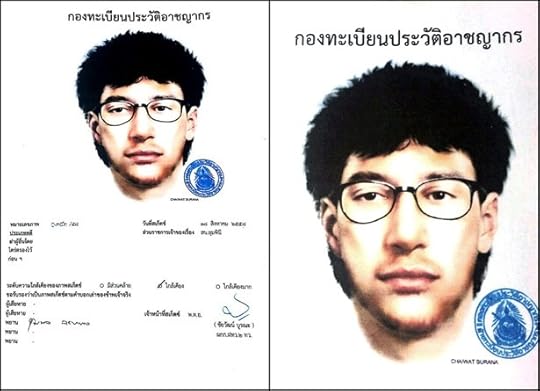
Thai police have released a sketch of the man whom they say carried out Monday’s bomb attack on a popular shrine in Bangkok that killed 20 people and injured more than 100 others.
Police say the bomber was part of a network, and are offering an equivalent of about $28,000 as reward for information that can lead to his arrest. Police released security footage that show a man wearing a yellow T-shirt and shorts, and carrying a backpack inside the Erawan shrine. Moments later, he removes the backpack, deposits it on a bench and walks off.
Thai Prime Minister Prayuth Chan-ocha said the man was likely hired to plant the bomb, and urged him to surrender.
Police spokesman Prawut Thawornsiri said in a TV interview Wednesday that two other men seen in the CCTV footage—one in red, the other in white—were also suspects in the investigation.
The explosion at the popular tourist attraction killed 20 people, mostly Thai, but also Chinese nationals, who are Thailand’s largest group of foreign tourists.
No one has claimed responsibility for Monday’s attack, nor for the explosion Tuesday at a Bangkok pier. No one was injured in that attack. National police chief Somyot Poompanmoung said Wednesday it was unclear if the two explosions were connected.
Soon after Monday’s blast, Thai officials appeared to blame supporters of the elected Thai government, which was deposed in a military coup last year. But on Wednesday, Poompanmoung was more measured: “I am confident that there are Thais involved but I am not saying it is just Thais or that there are foreigners,” he said at a news conference.
And, he added, the suspects was part of a network. “Not one person can do this,” he said.
The Erawan shrine, sacred to both Hindus and Buddhists, reopened Wednesday. The statue of the god Brahma—the creating deity in Hinduism—suffered only minor damage.
Security has been bolstered in the country following the attack, which the prime minister described as the “worst incident that has ever happened in Thailand.”
Although political unrest is common in Thailand and there have been low-level explosions over the years, the scale of Monday’s attack—and the death toll—are unprecedented. Thai officials downplayed suggestions that Muslim separatists from the country’s south were involved, saying it did not match their methods.









How Hamilton Recasts Thomas Jefferson as a Villain
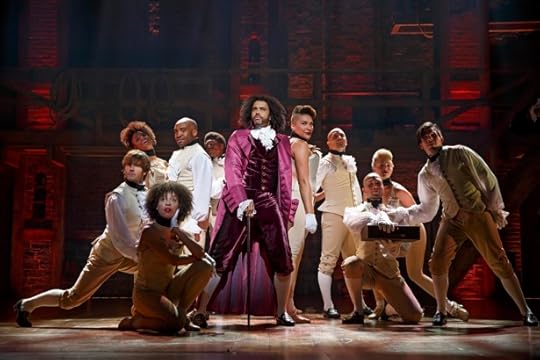
Go to any American elementary school and ask the students to name the Founding Fathers, and it’s likely that Thomas Jefferson will come up, right alongside George Washington and Benjamin Franklin. Jefferson wrote the Declaration of Independence. Jefferson is on the nickel. Jefferson’s face is one of the four on Mount Rushmore. Jefferson has his own monument in Washington, D.C. Jefferson got to be president.
But Jefferson’s star may be fading. Democrats are erasing his name from political dinners because of his slave-owning history. Abraham Lincoln, almost everyone’s favorite president, “hated Thomas Jefferson,” a Gettysburg College professor explained this summer. After the independent historian Henry Wiencek published a controversial book criticizing the Virginian in 2012, The New York Times called Jefferson “The Monster of Monticello.”
Related Story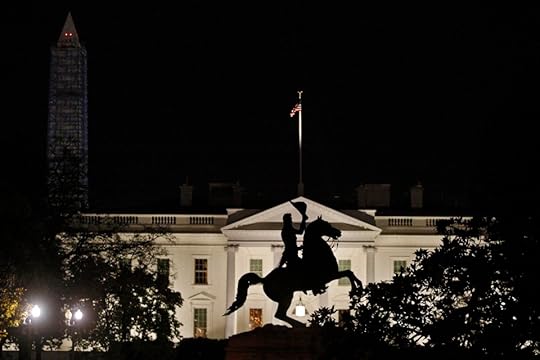
Is the Democratic Party Abandoning Jefferson and Jackson?
The newest knock to Jefferson’s reputation comes in Lin-Manuel Miranda’s musical, Hamilton, which has been drawing critical praise and raking in profits since it transferred to Broadway from the Public Theater this summer. The show, based on Ron Chernow’s 2004 biography, depicts Alexander Hamilton’s life through an amalgam of rap, hip-hop, and traditional Broadway melodies that explain the circumstances of his birth, his drive to succeed, his role in the Revolutionary War, and his subsequent family life and career. The show is replete with clever rhymes and modern-day slang, which help freshen a story that might otherwise seem familiar (at one point, Jefferson quotes Biggie Smalls, saying “If ya don’t know, now ya know”).
The eponymous hero of Hamilton, played by Miranda, is an orphan “son of a whore,” who, by dint of hard work and determination, becomes a right-hand man to George Washington, the driving force behind the Constitutional Convention, and the creator of the financial system that runs America today. He’s the hero of the show, and though he may be less famous that the other Founding Fathers (and an adulterer to boot), he has the same rags-to-riches story as Oliver Twist. The audience roots for him as he earnestly raps about the principles he believes in, while surrounded by less honest men.
Hamilton is cast without regard to race—none of the actors who play Aaron Burr, George Washington, and Thomas Jefferson are white—which makes it easier to forget that this is a retelling of history. It seems more a drama about the petty rivalries boys experience at school—the setting, in this case, being the American colonies. But the boy who has the biggest rivalry with Hamilton, in Miranda’s telling, isn’t Aaron Burr, played brilliantly by Leslie Odom, Jr., who serves as a sympathetic narrator. Instead, it’s Thomas Jefferson, who’s played by Daveed Diggs. In Miranda’s telling, Jefferson is a well-dressed dandy who avoided fighting in the war and—for a man who wrote the phrase “all men are created equal”—holds hypocritical positions about slave ownership and women’s rights.
“Hey neighbor. Your debts are paid because you don’t pay for labor,” Hamilton snaps at Jefferson during one of their two cabinet face-offs. Arguments about war in France and national debt are structured as rap battles between Hamilton and Jefferson, complete with ribald insults and, in one case, the dropping of a mic. That these are presented as verbal duels make the stakes seem higher, and it’s significant that they pit Hamilton against Jefferson, not against any other Founding Fathers. Their mutual animosity is on full display.
If Alexander Hamilton represents everything currently in the zeitgeist—he’s an immigrant, he’s an orphan, he’s a self-made man, he doesn’t want the country to get into foreign wars—Jefferson represents everything that’s out-of-fashion. He’s a slave-owning aristocrat whose father was a member of the Virginia House of Burgesses and who left him two-thirds of his estate, including 60 slaves, 25 horses, and 7,500 acres of land. Despite promises to free his 175 slaves upon his death, Jefferson only freed five—those related to his mistress Sally Hemings.
Popular history may see Jefferson as the man of the people and Hamilton as the creator of Wall Street and a monarchist. But in the musical (and Chernow’s book), the opposite is true. If Hamilton is the 99 percent, Jefferson is, in the show at least, the one percent. If Hamilton is Barack Obama (who told Jon Stewart he thought the show was “phenomenal”), Jefferson is Mitt Romney.
In Miranda’s telling, Jefferson is a dandy who avoided the war and holds hypocritical positions about slave ownership and women’s rights.Jefferson doesn’t show up in Miranda’s show until the second act, after the American Revolution is over, when he returns from Paris. “What’d I miss?” he sings, dressed in a foppish, purple velvet outfit, dancing across the stage like a dilettante. This is one of the more traditional show-tune numbers, and it serves to emphasize just how out of touch Jefferson is with the new country and what’s happening on the ground. “I’ve been in Paris meeting lots of different ladies. I guess I basically missed the late ’80s.”
After Jefferson resigns as secretary of state, he and James Madison start scheming, looking for dirt on Hamilton to ruin his reputation and erode any political sway he may still have, to “get in the weeds, look for the seeds of Hamilton’s misdeeds.” They eventually find evidence that Hamilton is paying funds to a man named James Reynolds—seeming proof that he’s corrupt. In reality, Hamilton was paying blackmail to hide an extramarital affair. Chernow writes that Reynolds likely instructed his wife, Maria Reynolds, to seduce Hamilton so that the couple could blackmail him.
The affair could be one of the reasons Hamilton isn’t remembered as fondly as the other Founding Fathers, the show suggests. It begins his downward spiral, as his son dies in a duel defending his father’s name, and both Hamilton and his wife are plunged into their own separate ennui. And there’s little doubt that Jefferson’s scheming bears some of the blame (it’s especially ironic that Jefferson was having an affair with his slave, Sally Hemings, which would have been a much more incendiary scandal at the time).
“Every other Founding Father story gets told. Every other Founding Father gets to grow old,” a character sings in the finale.
In a 1996 article for The Atlantic, Conor Cruise O’Brien wrote a criticism of Jefferson, reminding readers that the perpetrators of the Oklahoma City bombing had claimed Jefferson as an inspiration, particularly his maxim, “The tree of liberty must be refreshed from time to time with the blood of patriots and tyrants.” Jefferson held hypocritical positions about slavery and diversity, O’Brien writes, and encouraged militias in a way that might have inspired the Ku Klux Klan. Jefferson, he concludes, will soon have no place in American history:
I believe that in the next century, as blacks and Hispanics and Asians acquire increasing influence in American society, the Jeffersonian liberal tradition, which is already intellectually untenable, will become socially and politically untenable as well.
It may be two decades later, but Miranda, who is Puerto Rican and who has cast black, white, and Latino actors as the Founding Fathers, has made Jefferson seem socially and politically untenable. O’Brien’s wasn’t the first call for the nation to take another look at one of its favorite Founding Fathers, nor will it be the last. But maybe, with the help of Miranda and a little bit of rap, the urge to reexamine an American icon might start to catch on.









The Number of Cops Indicted for Murder Spikes Upward
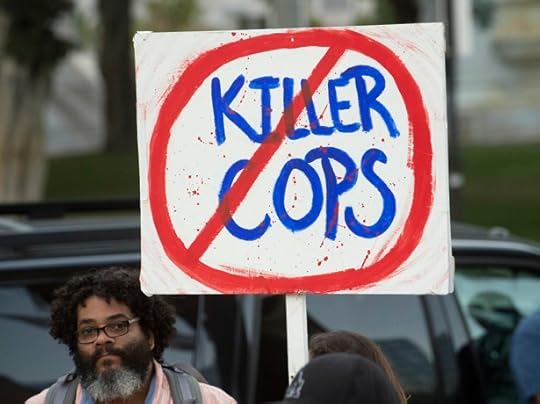
At least 14 cops have been charged in recent months with committing murder, homicide, or manslaughter while on duty. On Tuesday, a judge ruled that two Albuquerque policemen must stand trial for killing a homeless man as he appeared to surrender. The same day, “two former East Point police officers were indicted on charges that they murdered a 24-year-old father by repeatedly using their Tasers on him while he was handcuffed and sitting in a creek,” The Atlanta Journal Constitution reported.
On Monday, The Washington Post reported that “a former Fairfax County police officer was charged with second-degree murder, nearly two years after he shot an unarmed Springfield man who stood with his hands raised in the doorway of his home.”
At the end of July, prosecutor Joe Deters announced that University of Cincinnati police officer Ray Tensing will face murder charges for shooting an unarmed motorist during a traffic stop. In June, a South Carolina grand jury indicted former officer Michael T. Slager for shooting 50-year-old Walter Scott in the back as he ran away from a traffic stop.
In May, a Baltimore grand jury indicted six cops on homicide and assault charges in the death of Freddie Gray, who died in police custody. And a Tulsa deputy who grabbed his gun instead of his taser was charged with manslaughter in April.
There are a couple of ways to contextualize these numbers.
Observers have noted the fact that American police officers kill orders of magnitude more people than their counterparts in other western democracies. Now, the number of U.S. cops arrested for killings in the last five months exceeds the total number of people shot and killed by cops in England going back five years. This is particularly extraordinary given how reluctant many U.S. prosecutors are to file charges against police, and how much deference police reports are given in the absence of video or forensic evidence, like a bullet in the back, that blatantly contradicts their story.
Are U.S. police now being charged at a higher rate than before? Maybe. Over a seven-year period ending in 2011, “41 officers in the U.S. were charged with either murder or manslaughter in connection with on-duty shootings,” The Wall Street Journal reported in 2014, citing research by Philip Stinson, an assistant professor of criminal justice at Bowling Green State University. That figure works out to an average of 5.8 officers charged per year, but excludes officers charged in non-shooting deaths.
In a phone interview on Tuesday, Professor Stinson told me that in a period stretching from May 2005 to April 2015, 54 officers were charged for on-duty killings where they shot someone, working out to 5.4 officers charged per year. But that figure excludes non-shooting incidents, like when cops kill someone with a Taser or car.
Stinson also has data in which cases are the unit of measure.
Over that same seven-year period stretching from 2005 to 2011, there were 46 cases of cops being charged for on-duty killings of any kind––6.5 cases per year on average. The 14 officers charged over the past five months works out to an annualized rate of 33.6 cases per year, or more than five times the usual rate.
(The number of cases for on-duty and off-duty killings was much higher: 127 cases in that same time period, which works out to 18.1 cases per year.)
If prosecutors and grand juries are to be trusted, cops murder or unlawfully slaughter an extraordinary number of people. And while it may be that the five-month period we’re in now will look like just an unusual cluster, if the rate at which cops are indicted for killings continues at this pace, then we’re witnessing a sharp disjuncture with the recent past.
In yet another case, “a judge in Cleveland said that he believes there is probable cause to charge a police officer with murder for the death of Tamir Rice, the 12-year-old boy fatally shot while playing with a toy gun last year,” The Washington Post reported in June, but the ruling, “does not amount to formal charges being filed against the officers involved.” Regardless of how many officers are charged in coming months, the year-end number of cops charged will be scandalous, even though it almost certainly undercounts the number of unjust killings. Defenders of the status quo in policing should wake up to the need for reforms.









August 18, 2015
How Jeremy Corbyn Would Govern Britain
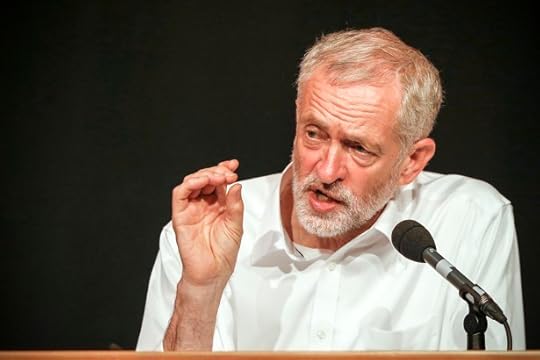
In June, Jeremy Corbyn made a shock announcement: He would seek the leadership of Britain’s opposition Labour Party. In the months since, the little-known, left-wing member of Parliament has captured the imagination of a substantial bloc of voters who, a bit like American supporters of Bernie Sanders or Donald Trump, are disgruntled with politics as usual. The very real prospect of Corbyn winning the leadership vote on September 12 has filled many within the party establishment with dread because, they say, Corbyn is emblematic of the ideology that made Labour unelectable for years.
So what exactly is Corbyn’s worldview, and how might he govern if elected prime minister of the United Kingdom? Corbyn is a self-described “socialist” or “democratic socialist,” an old-school tax-and-spend left-winger who believes government spending—not austerity—is the key to economic stimulus. He wants to close the U.K.’s budget deficit by, in part, raising taxes on the rich and ending corporate subsidies.
Domestically, he wants to renationalize the country’s much-maligned railways, scrap university tuition, and introduce rent controls. Many of these positions enjoy widespread support, though another—his support of mass immigration to the United Kingdom—does not.
Corbyn has also raised fears—which he has sought to tamp down—that he would reintroduce Clause IV of the Labour Party’s constitution. Here’s what the clause said:
To secure for the workers by hand or by brain the full fruits of their industry and the most equitable distribution thereof that may be possible upon the basis of the common ownership of the means of production, distribution, and exchange, and the best obtainable system of popular administration and control of each industry or service.
In other words, the party once committed to nationalizing industry. But Labour’s nearly two decades in the political wilderness in the 1980s and 90s prompted the party, under Tony Blair, to scuttle Clause IV. It was part of an effort to move Labour to the center of British politics—and it worked. Labour, under Blair, won the 1997 election and governed Britain until 2010.
Corbyn’s foreign-policy positions are unlikely to endear him to any occupant of the White House. He opposes British involvement in airstrikes against ISIS over Syria, wants to eliminate the country’s nuclear deterrent, and says he favors talks with his “friends” in Hamas and Hezbollah. And while he claims to favor the “harmonization of working conditions across Europe” through the European Union, he would oppose continued British membership in the bloc if it were based solely on the free market.
Corbyn, 66, was voted into Parliament from Islington North in London in 1983, in an election that Margaret Thatcher’s Conservative Party won in a landslide, and he has left-wing politics in his blood. His parents met while campaigning for peace during the Spanish Civil War, and his political beliefs are so entrenched that he split with his wife of 12 years over the choice of school for their son. He says they remain on good terms, but that he felt “very strongly about comprehensive education,” or public schools.
The Financial Times has more:
During his 32 years as an MP, he has adopted a host of causes: antimonarchist, trade unionist, vegetarian, revolutionary. Known for his beige outfits and ascetic tendencies, he likes to cycle and has no car. He loves making jam with fruit grown on his allotment, belongs to the All Party Parliamentary Group for Cheese and is a train obsessive.
Although such attributes might normally turn a politician into a political punchline, these are not normal times for the Labour Party. The party was trounced by Prime Minister David Cameron’s Conservatives in the country’s general election in May, after which its leader, Ed Miliband—who himself had steered the party to the left—resigned. Enter Corbyn, whose candidacy and uncompromising positions have caught on in the face of opposition from his centrist rivals for Labour leader: Andy Burnham, Yvette Cooper, and Liz Kendall.
Most polls show Corbyn easily winning the Labour Party election. He has a large following among Labour’s party faithful, but those backing him also include Green Party members as well as some gleeful Conservatives hoping that his victory will sink Labour. Anyone who supports Labour’s aims can pay the equivalent of around $4.70 and vote in the leadership election. Needless to say, there has been a surge in people applying for membership.
Here’s a letter to the editor in The Telegraph newspaper that sums up what many people—supporters and critics—think about Corbyn:
Jeremy Corbyn is the only contender for the Labour leadership who clearly espouses the socialist ethos of workers’ rights and public ownership, the twin pillars of Labour principle. It is no surprise that Tory supporters are so vociferous in his condemnation.
It’s not just the Conservatives, or Tories, who are vociferous in their condemnation of Corbyn.
Cooper, Corbyn’s competitor for the leadership post, has accused Corbyn of offering “old solutions to old problems.” Former Prime Minister Gordon Brown, under whose leadership Labour lost the 2010 election, did not explicitly name Corbyn in remarks on the race delivered Sunday, but he did say:
I have to say that if our global alliances are going to be alliances with Hezbollah and Hamas and Hugo Chavez’s Venezuela and Vladimir Putin’s Russia, there is absolutely no chance of building a worldwide alliance that can deal with poverty and inequality and climate change and financial instability, and we’ve got to face up to that fact.
No points for guessing who espouses those positions.
But perhaps the most biting criticism of Corbyn has come from Blair, now a much-reviled figure in Britain. Blair has argued that a victory for Corbyn could mean “annihilation” for Labour.
He also offered some advice: “People who say their heart is with Corbyn, get a transplant.”









The EPA's New Methane Rules for the Oil and Gas Industry
 The Environment Protection Agency is proposing a new rule that would reduce methane emissions from oil and natural-gas drilling by 40 to 45 percent of 2012 levels by 2025.
The Environment Protection Agency is proposing a new rule that would reduce methane emissions from oil and natural-gas drilling by 40 to 45 percent of 2012 levels by 2025. The rules would also amend existing regulations and be applicable throughout the oil and natural gas industry, including in production, processing, transmission and storage, the EPA said.
Related Story
How a Community College Dropout Discovered an Unknown Climate Hazard Right Beneath Our Feet
The rules, which would apply only to new and modified gas wells, were first outlined in January by the White House. They follow an announcement earlier this month of regulations forcing power plants to lower carbon-dioxide emissions by 32 percent from 2005 levels by 2030.
Both gases contribute to global warming, but methane’s global-warming potential (the amount of heat trapped by a specific amount of mass) is more than 25 times greater than that of CO2, the EPA says. The oil and gas industry was responsible for about 30 percent of methane emissions in the U.S. in 2012.
“Today, through our cost-effective proposed standards, we are underscoring our commitment to reducing the pollution fueling climate change and protecting public health while supporting responsible energy development, transparency and accountability," EPA Administrator Gina McCarthy said in a statement Tuesday.
The EPA says the proposed rule will reduce between 340,000 and 400,000 short tons of methane in 2025, as well as 170,000 to 180,000 tons of other volatile organic compounds and 1,900 to 2,500 tons of hazardous air pollutants. The announcement comes amid an increase in oil and gas output in the U.S., making the country one of the top energy producers in the world.
The energy industry opposes the regulations.
In a statement, Jack Gerard, the president and CEO of the American Petroleum Institute, called the new rules unnecessary. He said the industry reduced methane emissions by 79 percent since 2005. Carbon-dioxide emissions are at 27-year lows, he said.
“The oil and gas industry is leading the charge in reducing methane,” he said in a statement. “The last thing we need is more duplicative and costly regulation that could increase the cost of energy for Americans.”
Environmental groups welcomed the rules, and called for more action. Kate DeAngelis, who is with the environmental group Friends of the Earth, cheered the changes but added:
We have a serious problem with existing and abandoned wells, and the final rule needs to address them. The real solution to climate change is to leave fossil fuels in the ground and to clean up the abandoned wells that continue to poison our air.
The rules were unveiled a day after the Obama administration gave final approval to Royal Dutch Shell to drill for oil off the coast of Alaska. Environmental groups criticized that move.









Single Moms and Welfare Woes: A Higher-Education Dilemma

Jacklyn Trainor was a 28-year-old single mother in a writing class I taught in 2014 at Housatonic Community College in Bridgeport, Connecticut. Trainor was raising two kids, juggling childcare, homework, and waitressing. (Because I’m open about my own struggles attending graduate school as a single parent, students often ask me for advice or share their experiences.) “I hated working dead-end jobs and barely getting by,” Trainor, whose last name back then was Canales, recently told me. “I really want to further my education to get a career and a better life for my kids.”
For Trainer, hard circumstances made achieving that goal difficult. She’d defaulted on a student loan a few years earlier from a false start in nursing school, so it was nearly impossible to qualify for financial aid to go back to college. But Trainor was lucky; her family offered to pay for a few classes at Housatonic Community College, or HCC.
Out of the 12 million single-parent families in the United States, the vast majority—more than 80 percent—are headed by women. These households are more likely than any other demographic group to fall below the poverty line. In fact, census data shows that roughly 40 percent of single-mother-headed families are poor. Why? Experts point to weak social safety nets, inadequate child support, and low levels of education, among other factors.
College classes do not count as “work” in most states, so many of those who return to school lose access to welfare benefits.Although most poor, single mothers today are employed, many of them are working in low-wage jobs, often in positions without benefits. Earning a college degree is typically the best route to a high-paying career but many of these women find it hard to squeeze classes into a schedule already packed with work and childcare. One study of 158 single-mother college students in New York found that 100 percent of the former welfare recipients who earned four-year degrees stopped relying on public-benefit programs, compared to 81 percent of those who got two-year degrees. If earning a degree is so effective in ending poor mothers’ reliance on welfare, why aren’t policymakers making it easier for low-income single moms to go college? The answer is complicated.
For single parents who rely on public assistance, college classes do not count as “work” in most states, so many of those who return to school lose access to benefits like childcare vouchers and cash assistance. The Welfare Reform Act of 1996, which limited recipients’ access to cash assistance, also restricted the definition of “work” to nine core categories. Work credit is largely limited to vocation-focused educational training, and only for a maximum of one year. Each state has its own specific regulations.
For Trainor, attending classes counted toward some of her work benefits. So, every two weeks, she would wait until the classroom emptied to ask me to sign her work-verification forms and confirm she’d been in school. To retain eligibility for cash assistance, the state of Connecticut requires that recipients meet two times a week with their caseworkers to provide documented proof of any hours they work, attend school, or search for a job.
Even complying with all of the complicated regulations doesn’t guarantee recipients receive benefits when they need them, as Jessica McLeod, a single mother in Boston, discovered. I first interviewed McLeod for my dissertation a few yeas back. She’d lived in a shelter before she enrolled in community college. After earning a 3.7 GPA in community college, she was accepted into the nursing program at Bay State College, a for-profit institution that primarily offers two-year degrees. As a full-time student at Bay State, McLeod relied on food stamps, cash assistance, and a childcare voucher for her 8-year-old daughter Alia.
“I went through three different caseworkers who were so nasty about my being a full-time student,” said McLeod, who’s now 38 and working full-time as a registered nurse. As with Trainor, the caseworkers had to verify McLeod’s work-participation paperwork to ensure she was fulfilling all of the benefit program’s requirements. And even though education programs like the one in which McLeod was enrolled can count toward those requirements, it seems that caseworkers often favor vocational training as opposed to college classes. “Unless you’re doing their training to become a home health aide … [the caseworkers] just want you working,” McLeod said. “Don’t they understand I’m going to college so that I don’t have to use these benefits anymore?”
“Don’t they understand I’m going to college so that I don’t have to use these benefits anymore?”Studies in Georgia and California show a similar lack of support among welfare caseworkers for poor mothers trying to earn college degrees. Slightly more than half of the recipients surveyed in the California study reported that their welfare caseworkers were a “hindrance” to their college success. In interviews with case managers in Georgia, Fiona Pearson, an associate professor of sociology at Central Connecticut State University, found that some admitted to discouraging single-mother recipients from pursuing educational opportunities and instead steering them toward paid work. “Even if they felt themselves that a particular [cash-assistance] participant should stay in school, they felt bound by [federal] policy to counsel them away from a four-year degree,” Pearson told me.
Indeed, according to Pearson, the federal Temporary Assistance for Needy Families (TANF) program encourages caseworkers to focus on work versus education. In her paper, published in the journal Gender & Society in 2007, Pearson cited the 2006 law reauthorizing the program as the reason behind that shift in focus: “The TANF program was not intended to be a college scholarship program for postsecondary education,” the law reads.
As a nursing student, McLeod was required to document 20 hours per week of additional volunteer or work activities to remain eligible for welfare benefits. She said she always submitted those forms on time. Still, the state kept terminating her benefits, saying she’d failed to fulfill the requirements or submit the necessary forms.
“It’s an awful feeling to get that letter in the mail, saying your childcare voucher has been terminated,” said McLeod, adding that she spent hours in various offices trying to get her benefits straightened out, sometimes even missing school. Finally, McLeod found a legal-aid attorney who managed to reinstate her benefits after talking to officials at the Massachusetts Department of Transitional Assistance (DTA), which oversees the state’s welfare programs.
The DTA doesn’t comment on individual cases, but Thomas Mills, the department’s spokesman, emphasized its commitment to “helping those in need gain the skills and experience necessary to obtain and maintain economic self-sufficiency.” He added that “gaining an education is an essential component to escaping poverty, and DTA encourages clients to take advantage of educational activities during their time-limited benefits.” (McLeod no longer relies on food stamps, childcare, or cash assistance.)
* * *
Until 1996, most welfare recipients could pursue a four-year degree under the Job Opportunities and Basic Skills Training program, though some states limited higher-education opportunities to associate’s degrees. Just before welfare reform, 649,000 student parents were receiving cash assistance while enrolled full-time in education programs. Today, there are more parents than ever enrolled in college—one study estimates 4.8 million. But only 35,000 full-time students receive TANF aid, largely because of the policy reform. This trend can be seen at higher-education institutions across the country. The City University of New York, for example, had 27,000 welfare recipients enrolled in 1995. By 2000, the number had fallen to somewhere between 5,000 and 6,000. It’s hovered around that number ever since.
There is one federal program—TRIO—aimed at helping disadvantaged students “progress through the academic pipeline,” but it’s generally earmarked for those who are low-income, the first in their families to go to college, or disabled. While many single mothers would probably qualify for TRIO support because they’re low-income, the program doesn’t target service at their specific needs. The program’s website bears no specific mention of “student parents.”
Meanwhile, experts suggest that most of America’s postsecondary institutions are ill-equipped to meet the needs of the growing numbers of student parents—which according to the Institute for Women’s Policy Research now comprise a whopping 26 percent of the country’s overall undergraduate-student population. (Colleges appear unable to deal with and accommodate poor students in general, including those who are homeless or rely on food stamps, despite their growing numbers.)
The limited on-campus support helps explain why so few student parents complete their programs on time; just 4 percent of student parents in bachelor’s-degree programs graduate within six years, according to Autumn Green, who oversees the Center for Residential Student Parent Programs at Endicott College in Massachusetts. “We haven’t changed the way we design and provide college education,” Green said, reflecting on the country’s higher-education system. “It’s still geared toward childless 18-to-24-year-olds who are supported by their parents.”
Single parents are more likely to attend community rather than four-year residential colleges, in part because the former tend to cost less and feature more evening and part-time options but also because targeted resources are more widely available at the latter. On-campus childcare, for instance, is widely available at community colleges in some states. It’s unclear how many single mothers would seek out or stay in four-year degree programs if childcare were more accessible at those campuses, but chances are such resources would make a bachelor’s degree a lot more appealing to student parents.
Endicott offers one of the few comprehensive residential college programs in the U.S. designed specifically for single parents. The “Keys to Degrees” initiative arranges on-campus family housing, academic supports, and childcare or school for the kids, who eat for free with their parents in campus dining halls. Keys for Degrees boasts 100 percent employment after graduation, according to Green, and while many participants do rely on public assistance during their time in school, none of its graduates report using public benefits. The challenge is bringing highly successful resource-intensive programs like this one to scale. The Endicott program can only serve 10 students at a time.
College is “still geared toward childless 18-to-24-year-olds who are supported by their parents.”Other schools are finding ways to support student parents by allocating money from their own budgets, too. In 2011, Portland State University—where more than a fifth of the students are parents with dependent children—increased funding to expand its Resource Center for Students with Children. The university now offers a range of services targeted at student parents, from emergency loans and childcare subsidies to family counseling and even children’s-clothing exchanges.
“Our biggest challenge is getting the word out about our programs and services,” said Lisa Wittoroff, a licensed clinical social worker who oversees the resource center. Student parents’ unique needs “can be invisible unless they have their kids with them. You don’t check a box when you apply that says you have a child. And some of them are hiding [their circumstances] because of the stigma attached to being a student parent.” Indeed, according to Pearson, some students don’t reveal their family status because they don’t want to be seen as “playing the ‘student-parent card,’ asking professors for favors even though they might actually need special accommodations.”
Amid limited resources at the colleges themselves, nonprofit organizations are also working to accommodate the needs of single-parent students. The Jeremiah Program, a Minnesota-based nonprofit, was founded in 1997 after interviews with local single-mother students revealed how little access they had to safe and stable housing and childcare. “We recognized that single-mother students had needs beyond what a typical admissions officer or career counselor could address,” said Gloria Perez, the program’s president and CEO.
The Jeremiah Program now serves roughly 300 women and children annually at locations in St. Paul and Minneapolis. The families are typically housed there and receive help with early-childhood education, academic guidance, and career counseling. (The organization is also expanding into Austin, Texas; Fargo, North Dakota; and Boston, Massachusetts.) “We’ve found that creating cohorts of women with children who are all going to school really boosts morale and creates a sense of community, the feeling that they are not alone,” Perez said. And the model seems to work: Almost all the program’s graduates earn some sort of college degree, while the remainder complete certificate programs. More than 90 percent of its recent graduates are employed or continuing their education.
* * *
When I was applying to Ph.D. programs in 2008, a former professor of mine actually advised me not to mention my status as a single parent—even though I planned to study the sociology of single-parent-headed families. During the first two years of my Ph.D. coursework, I sat through classes worrying about having to pick up my 2-year-old daughter and finish my research paper while she napped. I rarely found the time to attend on-campus lectures or study sessions, let-alone extracurricular departmental activities like Red Sox games and camping weekends in the Berkshires.
For the majority of single-parent students without access to comprehensive resources like those at the Jeremiah program, day-to-day responsibilities remain overwhelming. “Balancing everything is so hard,” Trainor, my former student, told me. “It’s like: Wake up, drop off at daycare, go to school, pick up from daycare, drop off to father or grandma, go to work, pick up, repeat … I felt like there was so much pressure on me, and I was alone.”
“You don’t check a box when you apply that says you have a child.”I recall extending a deadline for Trainor, who excelled in my writing course, after she had to miss a class because her daughter was sick. But deadlines in her algebra course were harder to meet, she told me. Between the kids and her work schedule, she didn’t have time to finish her math homework on the library computers; the assignments required Internet access, which she couldn’t afford.
Basic needs like Internet access for homework assignments are taken for granted in the mom-and-dad-pay-tuition-and-visit-on-parents’-weekend model common at today’s colleges. A 2001 study of welfare recipients in central New York who were pursuing postsecondary degrees found that nearly three-fourths of the respondents cited an inability to juggle demands of work, family, and school as their reason for dropping out. Other common reasons included inadequate childcare or insufficient childcare funds; a lack of academic support; and feeling misunderstood or undervalued in class. “If you have a student who is hungry or who doesn’t have a safe place to live or care for their child, they can’t really be a student,” said Endicott’s Green, who also pointed to the cost of textbooks and supplies.
Between 2007 and 2012, Central Connecticut State’s Pearson interviewed 40 student parents attending community and state colleges in Connecticut, and found many of the same unmet needs. “Why don’t we provide student parents some of the same resources we offer to student athletes?” she said, citing services like priority registration and additional tutoring as resources that could help student parents to succeed.
I lost touch with Trainor for a while after she was my student. By the time I reconnected with her for this story, she had moved from Connecticut to Massachusetts, where her mother and brother live, remarried and is paying off her student loans. Once again eligible for financial aid, she’s now enrolled as a full-time student at Springfield Technical and Community College.
McLeod, too, has recently gone back to school—in her case, as a part-time student pursuing a bachelor’s degree at New Hampshire’s Saint Anselm College while continuing to work full-time. Now that her daughter is in a school program that starts at 7 a.m. and ends at 5 p.m., she no longer struggles to find childcare. “Looking back, I don’t even know how I got through it,” McLeod said. “But it’s what you do for your kids.”









Russian Police Bust a Criminal Cheese Ring

Russian police busted a criminal cheese gang and seized $30 million of contraband cheddar. Six people in Moscow have been arrested for smuggling in foreign rennet, an ingredient used for cheese production that’s banned under counter-sanctions, and selling cheese made with the contraband using counterfeit labels. The Guardian notes that this particular group of criminals were more sophisticated than the typical cheese smuggler: They sold their cheap locally-produced cheese to Russians disguised as luxury items imported from Europe.
The state of cheese in Russia has gotten a lot of attention this year, with the Russian government trying to bust black-market cheese dealers in bodegas and online. Earlier this month, on the first anniversary of the ban on Western food products, the government aired footage on national television of a bulldozer destroying illegally imported cheese. President Vladimir Putin also ordered foreign ham and fruits to be burned, amid criticism that the illegal foods could have been donated to those living in poverty. The counter-sanctions were in retaliation to Western sanctions over the annexation of Crimea in Ukraine.
This has led to a surge in local production: State statistics show that cheese production increased by 30 percent in the first four months of 2014. But savvy Russians have reported that pizza made with local cheese just doesn’t taste like the same.
It’s easy to see where the cheese gang saw opportunity: decreased supply, paired with steady demand for a product that’s hard to substitute. In Russia, cheese demand—just like demand for any banned commodity or substance—has given rise to black markets and criminal activities.









Atlantic Monthly Contributors's Blog
- Atlantic Monthly Contributors's profile
- 1 follower



